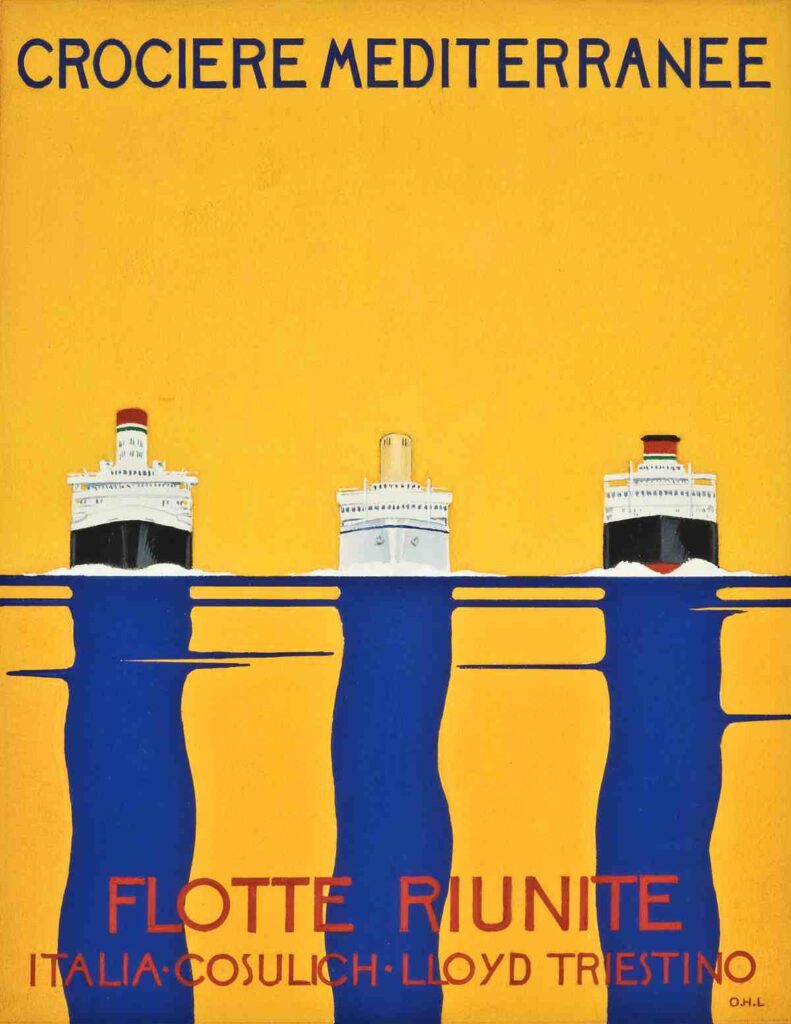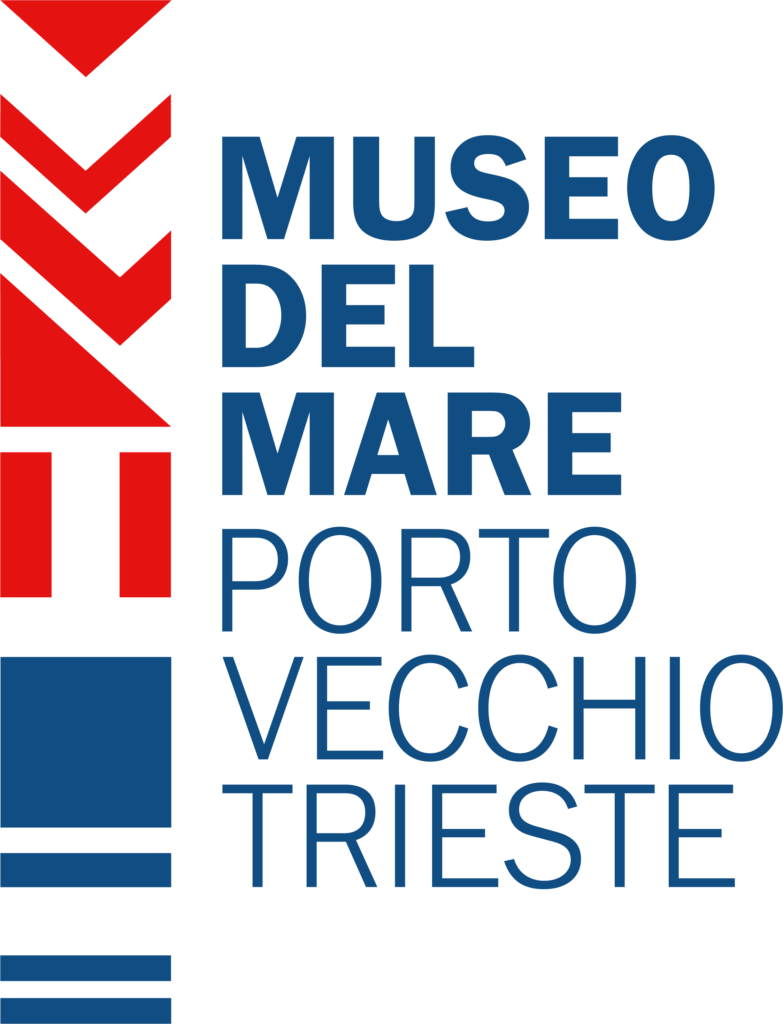Passengers and goods in 19th century Trieste
The development and diffusion of steam navigation in the 19th century spurred the emergence of large shipping companies not only transporting regular goods but also carrying post and passengers on set routes.
The first shipping companies were formed in Great Britain and the USA, but developed later in various European countries as demand for passenger transport grew.
In 1818 Trieste-Venice was the first regular steamship route in the Mediterranean, but the first major shipping company in the Habsburg Empire was Lloyd Austriaco. Many others followed, such as Austro-Americana, later the Cosulich Line, Società di Armamento ed Agenzia Marittima Tripcovich and Navigazione Libera Triestina.

In two paintings by Vito Timmel, a painter born in Vienna but educated and active in Trieste, showing ships of companies operating in Trieste in 1893 and 1913, the increase in tonnage in just twenty years is very evident.
Passengers and goods in 20th century Trieste

After the First World War, shipping had to face not only the task of reconstruction but also the change of prospects arising from the annexation of Trieste to Italy. The Italian Government carried out a nationalisation programme under the aegis of the IRI, merging the main shipping companies under the name of Italia Flotte Riunite (United Fleets of Italy) and then Società di Navigazione Italia, and making the new ships an important source of national pride. The Saturnia, whose model is on display, was the symbol of a style of travel and an emblem of modern construction, along with her sister ship, the Vulcania.
The diorama of the Monfalcone Cantiere Navale Triestino (Trieste Naval Dockyard) in 1913 shows seven ships under construction, including the Steamship Belvedere, the transatlantic liner Kaiser Franz Josef I in final preparation, a small warship, and a steamship in the floating dock.
Transatlantic travel went into decline after the Second World War, falling into crisis until the advent of a new concept of tourism.
The models of post-war ships include the Ausonia, built in 1957 by Cantieri Riuniti dell’Adriatico [United Adriatic Shipyards]. She entered service as a liner and commercial ship on the Trieste-Beirut route, and was converted into a Mediterranean cruise ship in 1978.
The Cosulich Line
The Cosulich family began business in Lussino in the mid-nineteenth century, moving to Trieste in 1889, the year in which they bought their first steamships, the Elena Cosulich and the Antonio Felice Cosulich.
In the following years they acquired several other steamships, and in 1901 gained control of the Austro-Americana shipping company, which voyaged between the Adriatic, North America and the Gulf of Mexico. In 1904 the new company was named “Unione Austriaca di Navigazione già Austro-Americana e Fratelli Cosulich Società Anonima”, and on 9 April the steamship Gerty set sail from Trieste to New York.
Booming emigration enabled the Cosulich Line to grow and compete with the major European companies. In 1908 the Martha Washington, the first luxury liner to cater for first-class passengers, was unveiled, and a few days later the company’s shipyard, the Cantiere Navale Triestino, opened its doors in Monfalcone.

This industrial activity was interrupted by the First World War, and despite subsequent attempts at recovery, which saw the launch of the luxury motor vessels Saturnia and Vulcania, the company was absorbed into the centrally managed Italian shipping sector in the 1930s.


